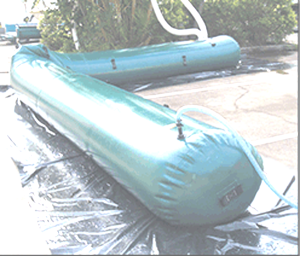 IT RAINED LAST WEEK. What a glorious sound to go with the wonderful smell of fresh, moist earth! Even with the small amount of rain, it was enough to fill my three rain barrels that “harvested” about 180 gallons of water. My citrus grove (a Meyer lemon and an orange tree) will get a good soak, as will my redwoods and pine tree.
IT RAINED LAST WEEK. What a glorious sound to go with the wonderful smell of fresh, moist earth! Even with the small amount of rain, it was enough to fill my three rain barrels that “harvested” about 180 gallons of water. My citrus grove (a Meyer lemon and an orange tree) will get a good soak, as will my redwoods and pine tree.
I know it’s not enough water. But to remedy that, I’ve been looking to install a rain harvesting system that diverts rain from my roof to larger capture/catchment containers for use throughout the year.
One calculation for annual rain capture is “Maximum annual gallons of rain capture = annual rainfall x square footage of roof x .623 gallons.” If you have an asphalt roof like I do, some websites tell you to factor in 95-percent efficiency — or, in other words, a 5-percent loss.
I wondered what the average rainfall is for Benicia, so I went to our city of Benicia website and found that we get about 19 inches of rain annually. But with the current drought I found another rather shocking number — for the last 12 months we’ve been at 4.46 inches! So, if we can hope for only 4 inches of rain this year, and considering my 1,000-square-foot roof, it’s possible that I could collect 4 x 1,000 x .623 = 2,492 x .95 = 2,367.4 gallons. That’s what I’m planning for anyway, and it’s pure frosting on the cake.
But a 2,000-gallon system is BIG! At first, I was looking at above-ground tanks, knowing that whatever type of system I put in will require some sort of permitting in Benicia. California passed legislation last year (February 2013) called the Rainwater Capture Act that officially allows residents to capture rainwater. I looked at the municipal code for Benicia and there isn’t anything specific to rainwater harvesting, but I’m sure for a big system the city may want to have something in place, especially when the new and exciting HERO (Home Energy Renovation Opportunity) program is launched soon. More on that as it relates to rainwater harvesting in a moment.
The average 2,000-gallon tank can be 7.5 feet in diameter and 7 feet high. It’s also possible to link two 1,000-gallon tanks together and save some space, but not much. The diameter might be 5 feet by 7.5 feet high. Still, for me, it’s a pretty big footprint.
The 1,000-gallon tank that I’ve described would also weigh 140 pounds empty. As a gallon of water at 62 degrees Fahrenheit weighs about 8.34 pounds, a thousand gallons would weigh 8,430 pounds — for just one full tank! This probably means consideration for the load of water to be contained. The city of Berkeley has a requirement that any cistern (tank) holding more than 100 gallons needs a plumbing permit. Anything over 360 gallons needs a building permit and zoning certificate as well.While I still would need to consider what the city needs for any system I may put in, I am now actually looking at a bladder system that may just fit my needs and my available space a little bit better. When I look for bladder systems that are for residents, my search inevitably takes me to Australia. The water bladder photo above gives a sense of what this system looks like.
It bears some thought
Even though a rain harvesting system is expensive, I would like to preserve the trees and bushes in my yard. The beauty and natural purpose they serve is also very valuable to me.
I continue to replant with extreme drought-tolerant plants. I have an eye on the calendar and the upcoming October Arbor Day celebration in our City Park, and I’m hoping the Native Plant Society folks will participate again with their wonderful sale. Meanwhile, I’m thinking about rain harvesting. I’ll keep you posted on the topic.
HERO
The Home Energy Renovation Opportunity program will soon be available in Benicia. The number, variety and usefulness of the products that are eligible under this special home-efficiency financing program are impressive, ranging from electric vehicle charging stations to “rainwater catchment systems.”
In a nutshell, here is the description of the program: “HERO is unique in that it provides financing for approved energy-efficient, water-efficient and renewable energy products. HERO finances 100 percent of the cost to purchase and install eligible products. HERO offers low fixed interest rates, flexible payment terms including 5/10/15/20 years for most products, and repayments are made through your property taxes. Additionally, if the property is sold before the HERO financing is paid in full, the remaining payments can be passed on to a new property owner.”
Stay tuned!
Learn more
• sustainablebenicia.org — keep an eye out for HERO program information
• turtlepac.com — Australian provider of bladder tanks.
Constance Beutel is the chair of Benicia’s Community Sustainability Commission. She is a university professor and videographer and holds a doctorate from the University of San Francisco.







Leave a Reply